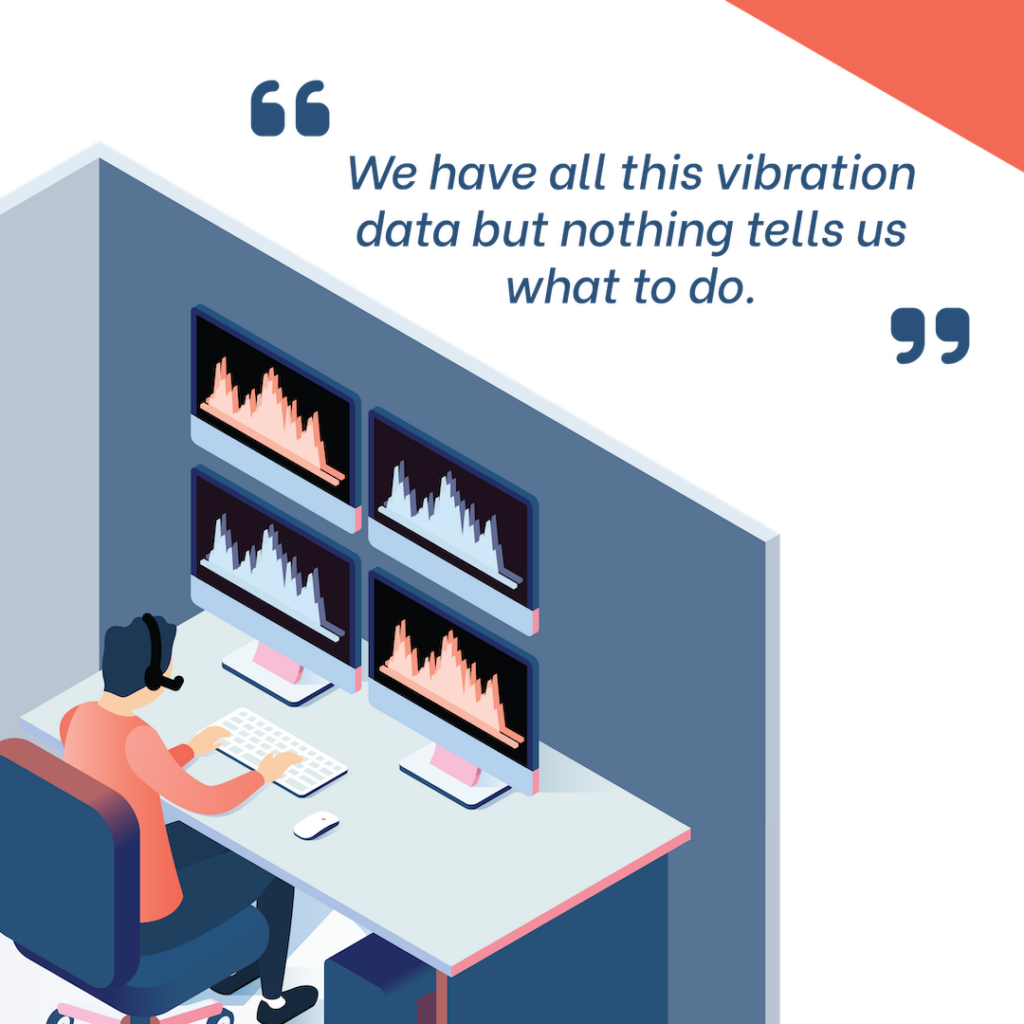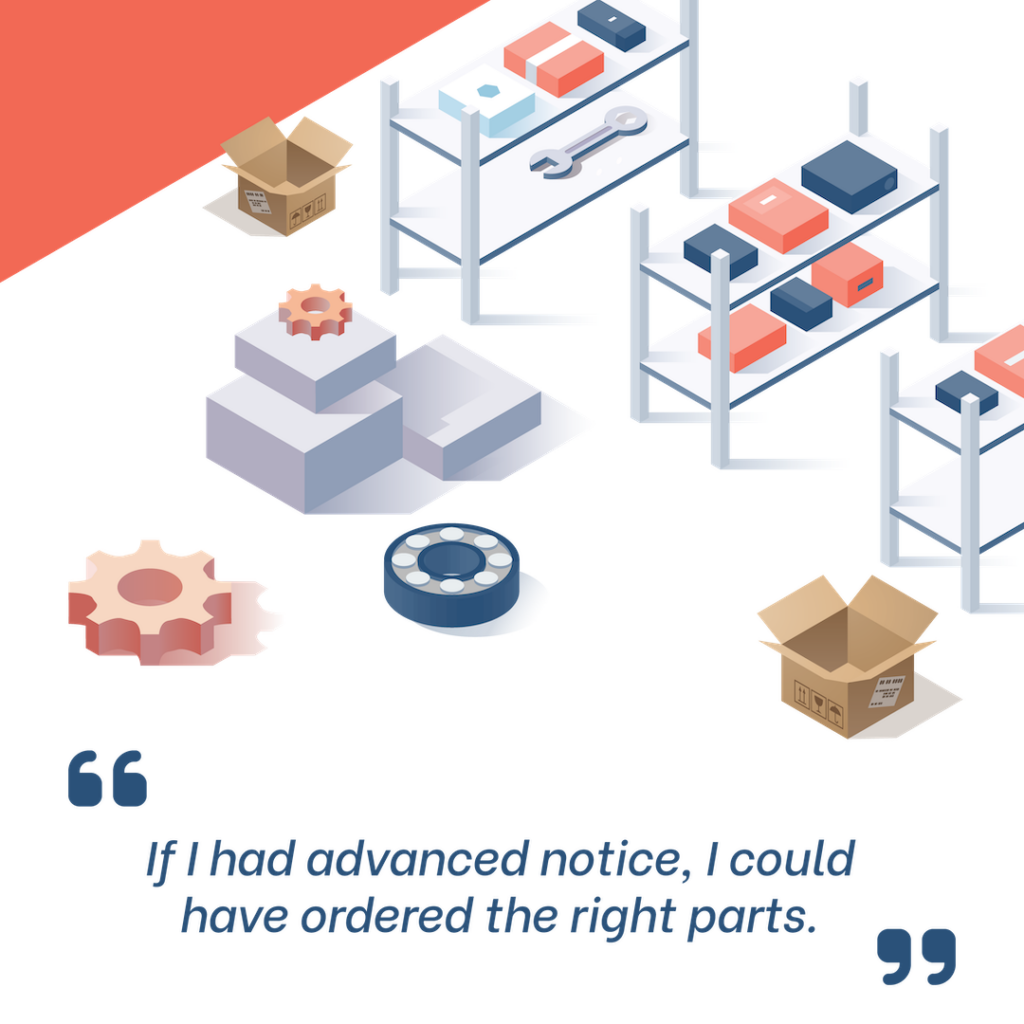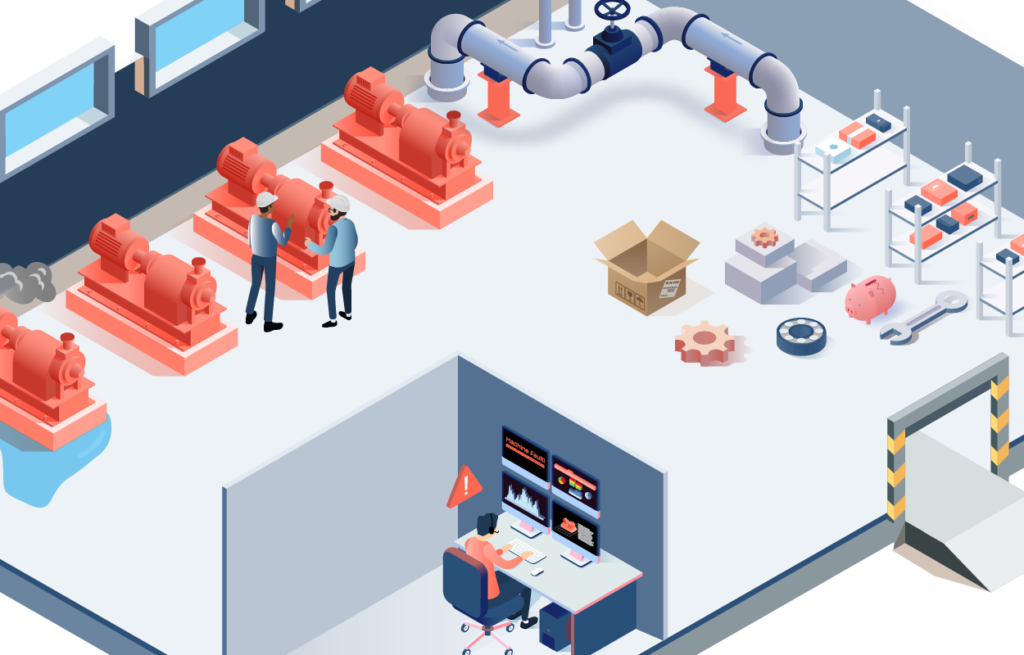Does your maintenance program need some… well, maintenance?
A “good” maintenance program involves keeping equipment in peak condition and mitigating failure. Getting to this result takes the proper balance of strategies, people, and resources. Between changes in management, the revolving door of employees, and unreliable contractors, it can be relatively easy for an organization’s program to slip away from “good” into a reactive cycle of doom.
The purpose of this blog post is not to make you feel bad about your current maintenance situation – it’s an intervention for the individuals or organizations that might feel stuck. Much like a 12-step program, the first step is to admit that you might have a problem. The aim here is to help recognize the signs of what makes your program ineffective so that you can ultimately be proactive.
Sign 1: Machine Failure Without Warning

One of the most glaring indicators of an ineffective maintenance program is one which has an overall reactive maintenance strategy where machines fail without warning (aka “Breakdown Maintenance”). The mindset with this type of strategy is to let machines fail and react to problems when they occur.
What’s wrong with this? For starters, this can lead to very high maintenance costs in several forms – neglected machine faults can cause secondary damage, downtime for production, overtime for employees/contractors, and add to the cost of keeping spares on hand. A reactive approach is a surrender of control for your organization, assets, and typically lends itself to a bad maintenance culture.
The answer to this problem is to detect critical asset problems before they occur (“Predictive Maintenance” or “PdM”). Moving to this type of strategy will allow you the freedom to schedule your maintenance, order your spare parts ahead of time, and take action before problems balloon into something more.
Sign 2: Vibration Data, But No Analysis

Maintenance and reliability teams need professionals with the expertise needed to interpret vibration data. You can collect data on your machines all day, but the data won’t serve you if you do not know what to do with it. Not to mention, teams are often pressured to spend less time analyzing data and just get answers to what needs to be done and how to do it as quickly as possible.
Additionally, machine data needs to be stored in a centralized location. This keeps all internal stakeholders aligned, prevents unnecessary maintenance from being performed, and ensures your team stays on top of needed maintenance. Collecting and tracking actionable data proves quite challenging without the expertise, tools, and time.
The buy-in you receive from upper management will allow you to invest in sensor monitoring equipment and CMMS (computerized maintenance management software). CMMS or other specialized software will help you create predictive models and inform the decisions, action, or inaction to make when maintaining machinery. However, these investments can sometimes present a roadblock in your budget. It is integral to understand that if you invest in PdM that your technicians receive training. Without the appropriate expertise on the plant floor, you will be throwing money out the window.
Sign 3: Not Having the Right Parts in Time

As we covered earlier in the post – not having the proper spare parts when machine failure occurs can amplify your duration of downtime. The answer to this problem isn’t to just order a bunch of spare parts and have them on hand (this is often what Preventive Maintenance programs do).
Why? Because the cost of ordering spare parts on a regular basis can add up quickly and leave your organization with shelves full of stuff that isn’t needed. Additionally, maintenance programs with an overall preventive strategy tend to replace machine components that don’t need to be replaced.
The appropriate course of action with spare parts is to find a balance with replenishing your inventory. As soon as you detect machine faults, schedule when the repairs will take place and order spares accordingly. Having them ahead of schedule will prepare you for success.
Sign 4: Abandoned Sensors and Tools

In the past couple of years wireless vibration sensors have become commonplace in many facilities. Here at Acoem, we love wireless sensors just as much as the next guy, however, they only add value if the vibration data that they are recording is being utilized. If you have these types of sensors on your assets, make sure that the service company that you partnered with is analyzing the data being collected and communicating with your team to take corrective maintenance action.
Similarly, another problem that we sometimes encounter in industry is the abandoned tool phenomena. An example is when an organization will invest in condition monitoring equipment that they intend to use in-house, only for it to be neglected. This can occur for various reasons:
- Nobody knows how to use the equipment due to a lack of training, knowledge, or experience.
- The employee or contractor who did know how to use the equipment left the organization – maybe they retired or changed jobs.
- A changing of hands in leadership and/or decision-makers – the unfortunate decision may have been made at some point to move away from condition monitoring.
The solution to these problems is to make sure that your organization’s predictive equipment is operable, in-use, and supplies your team with the actionable insights needed to be productive.
Sign 5: Skill Shortages, Staff Changes and Bad Contractors

Finding highly skilled maintenance and reliability professionals can prove quite challenging. Lack of expertise is an issue that is further caused by companies not investing in training for the employees that they do have. This is where lack of expertise can become intertwined with an overall lack of money. As often as funding is lacking for tools and personnel, it’s not unusual for funding to be unavailable for the training needed to develop employees’ skills.
When a facility hires a contractor to manage its maintenance program, typically the most inexpensive provider wins the bid. However, hiring inexpensive contractors often comes with a cost. Lower costs can be an indication that the contractor is not as skilled as its competitors. When the contractor lacks skills, your facility will experience the pain points associated with a lack of expertise as described above.
What’s the solution? Shop for the right contractor, set clear expectations up front, and make sure that they are providing what was contractually agreed upon. Even if your budget is tight, always find room to invest in your employees through training. Their growth will open up new opportunities for your team and organization to grow as well.
How To Be More Effective
If you are struggling with one or more of the problems that we covered in this blog post, then you are not alone. Some key solutions to all of these problems are in the bullets below:
- Implement Predictive Maintenance Strategies (PdM) for assets in your facility to detect problems and fix them before additional problems occur.
- Make sure that your vibration data is being analyzed and supplying your maintenance team with the information to take corrective action.
- Don’t wait until a problem occurs to order spares. Also, don’t order parts you don’t need. Instead, order what is needed and schedule your maintenance accordingly as machine faults are detected.
- Make sure that the sensors on your machines are providing you with data and make sure that your employees know how to use the tools that your company has invested in.
- Don’t let bad contractors weigh you or your team down – make sure you shop up front and partner with the appropriate contractors.
- Invest in the people that work for you by training them and build a culture of growth!
The most important solution to all of the problems that we’ve covered in this post is mindset. A maintenance team doesn’t exist to just fix problems. If that mindset is adopted, then this serves as an invitation for a team to be stuck in a reactive cycle of doom.
We can’t ONLY FIX. Effective maintenance that is reliable is so much more – it detects problems, corrects them, and verifies the corrections. It involves completing tasks with precision and attention to detail. It involves good organization, scheduling, and a devotion to getting better.
In the following weeks, we will be hosting a webinar called The Practical Pathway to Predictive Maintenance which will guide attendees through the process of setting up a PdM program from start to finish. Stay tuned for more information on the webinar if you are interested. Additionally, please check out our Advisor Vibration Program if you are looking to tackle some of the problems that we covered in this post. We are here to help, however we can.




2 Comments
Nice article, all valid points which incidentally, have been known for many years. Implementation is key. “Talking the talk” is fine but where the rubber meets the road we need to “walk the walk”. As you clearly stated training is essential, with a commitment to put the training into practice. Maintenance personnel need the time to perform “precision maintenance”, to quote Edwin C. Bliss (author, journalist) “The pursuit of excellence is gratifying and healthy. The pursuit of perfection is frustrating, neurotic, and a terrible waste of time”. As an example, if we consider dynamic balancing of rotors, perfection would be 0.00gmm/kg of rotor mass (see ISO 1940), excellence would be an achievable tolerance. Similarly, perfect shaft alignment would be 0.0 offset, 0.0 gap, excellence on the other hand would be a tolerance based upon RPM and coupling spacer length!
Thank you for bringing up this important topic of the maintenance program itself needing maintenance. I couldn’t agree more with your perspective.
Maintenance programs are crucial for the smooth operation and longevity of any system or equipment. However, it’s easy for these programs to become stagnant over time. Without regular review and updates, they may lose their effectiveness or fail to address evolving needs.